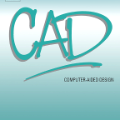We explore the interpretability of 3D geometric deep learning models in the context of Computer-Aided Design (CAD). The field of parametric CAD can be limited by the difficulty of expressing high-level design concepts in terms of a few numeric parameters. In this paper, we use a deep learning architectures to encode high dimensional 3D shapes into a vectorized latent representation that can be used to describe arbitrary concepts. Specifically, we train a simple auto-encoder to parameterize a dataset of complex shapes. To understand the latent encoded space, we use the idea of Concept Activation Vectors (CAV) to reinterpret the latent space in terms of user-defined concepts. This allows modification of a reference design to exhibit more or fewer characteristics of a chosen concept or group of concepts. We also test the statistical significance of the identified concepts and determine the sensitivity of a physical quantity of interest across the dataset.
翻译:在计算机辅助设计(CAD)的背景下,我们探索3D深深层学习模型的可解释性。参数 CAD领域可能因难以用几个数字参数表达高层次设计概念而受到限制。在本文件中,我们使用一个深层次的学习结构将高维3D形状编码成一个可用来描述任意概念的矢量化潜在代表体。具体地说,我们训练一个简单的自动编码器来参数化复杂形状的数据集。为了理解潜在的编码空间,我们使用概念活化矢量(CAV)的概念,用用户定义的概念来重新解释潜在空间。这样就可以修改参考设计,以显示所选概念或一组概念的或多或少的特点。我们还测试所确定概念的统计意义,并确定各数据集实际兴趣数量的敏感性。




